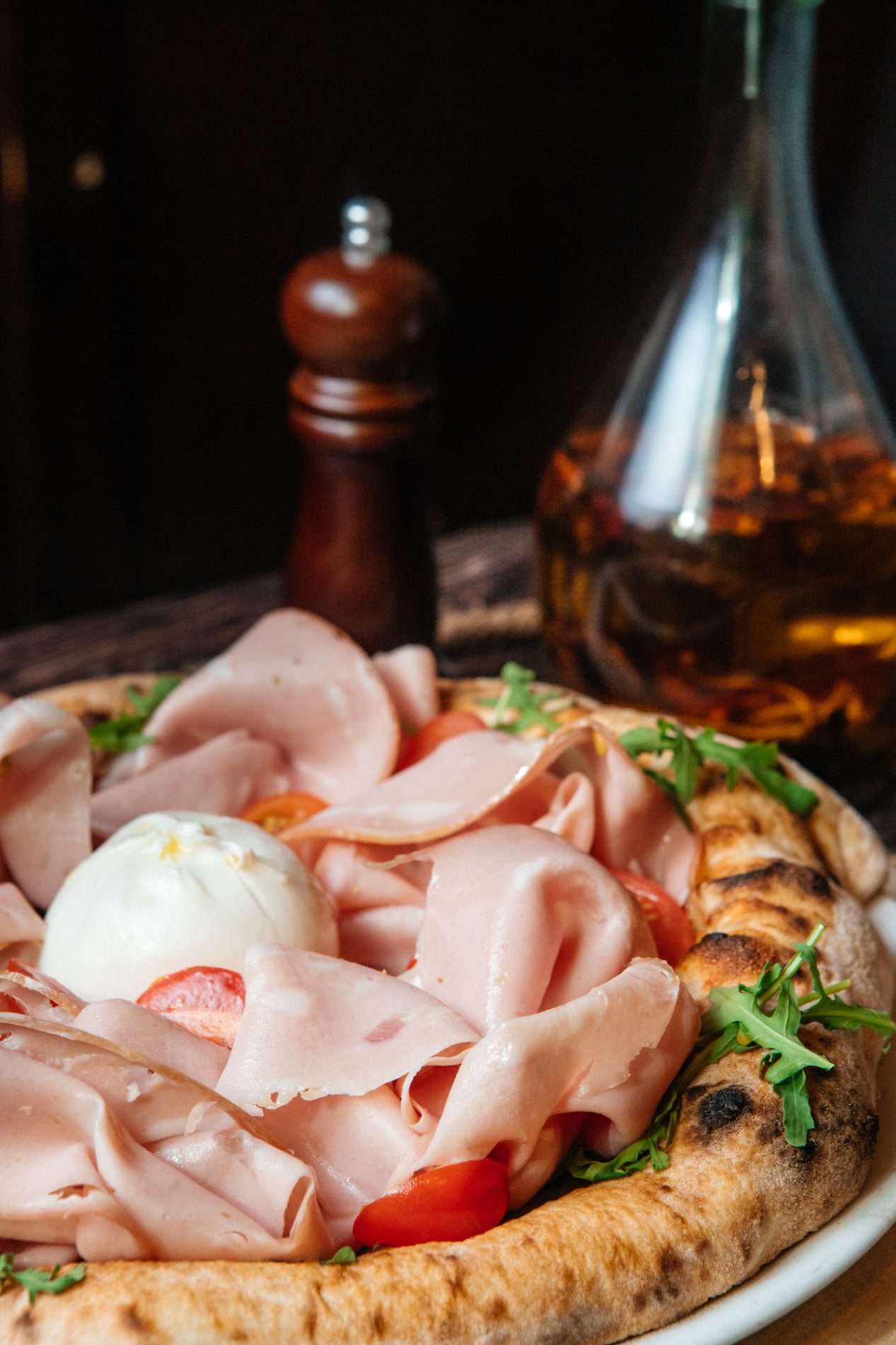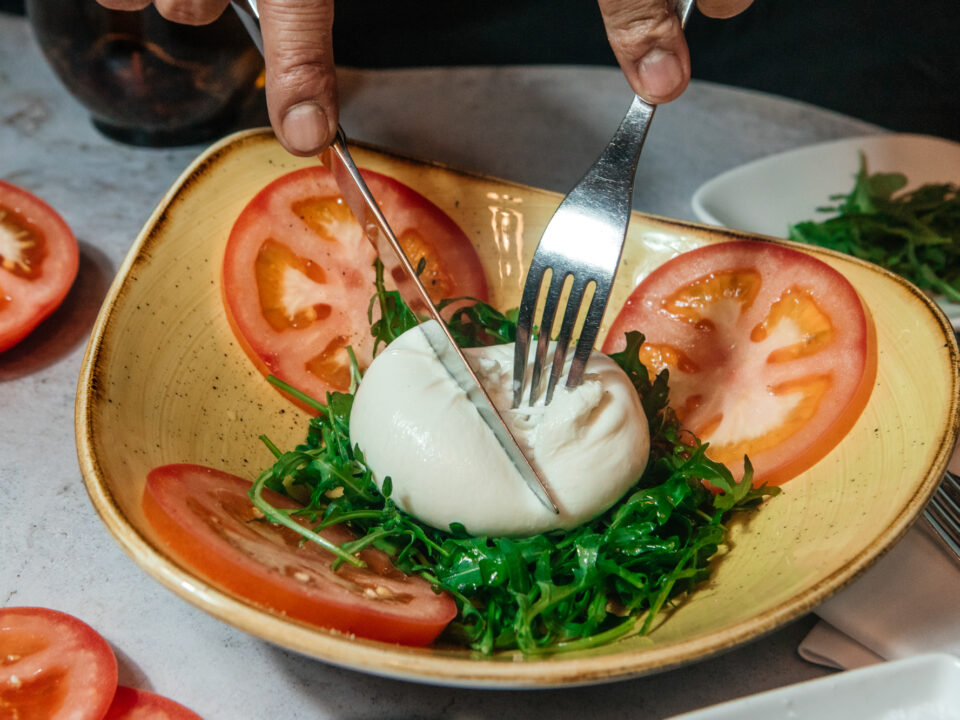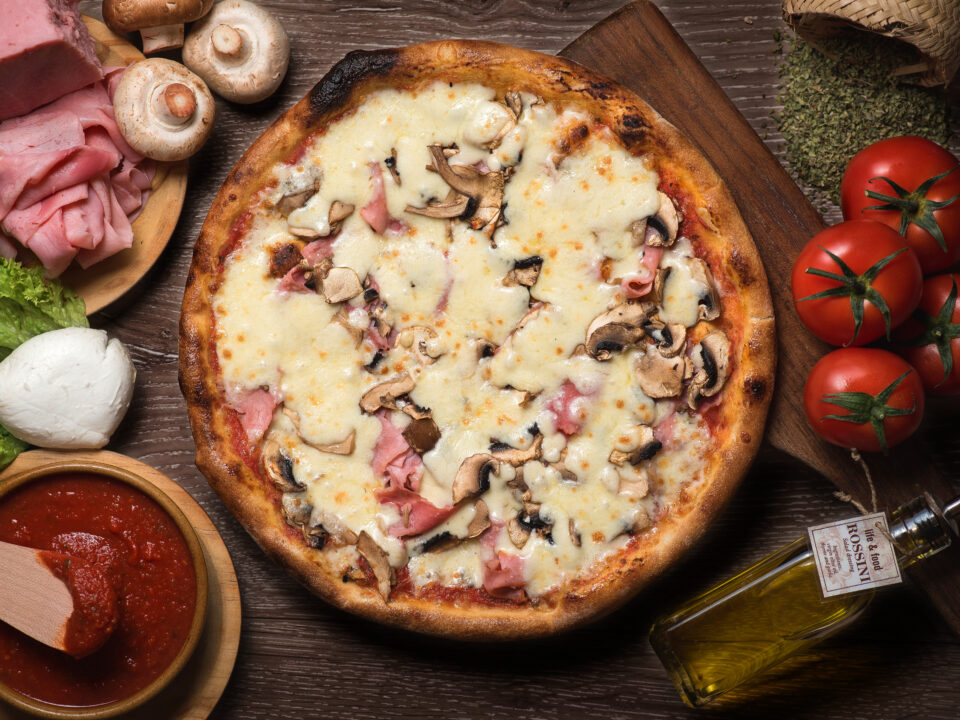What makes burrata so special? This Italian cheese, which has crossed borders to delight even the most discerning palates, is much more than a simple dairy product. With its smooth exterior and creamy heart, burrata is a gastronomic experience in itself. And at Rossini, the quintessential Italian restaurant, this delicacy is honored with creations that elevate its flavor to the fullest.
Table of Contents
How do you eat burrata?
- In Salad: Burrata is masterfully combined in Italian salads, where it is mixed with ripe tomatoes, fresh basil, and rocket, among other ingredients. At Rossini, our star salad combines the creaminess of burrata with the freshness of RAF tomato and the spicy touch of rocket.
- On Pizza: Burrata, accompanied by mozzarella and other classic Italian ingredients such as mortadella and pomodorini, becomes a true feast on pizza. At Rossini, our “Burratina e Mortadella” pizza pays homage to Italian tradition with an explosion of authentic flavors.
- With Pasta: The creamy texture of burrata complements fresh pasta perfectly, whether in a simple tomato and basil sauce or an indulgent truffle sauce. In Italian cuisine, it is common to find burrata accompanying pasta dishes such as ricotta and spinach ravioli, or fresh tomato tagliatelle.

Characteristics of Burrata
Taste
The taste of burrata is a combination of the milky freshness of mozzarella with the richness and creaminess of cream. It is soft and delicate, with a subtle sweetness that melts with a light touch of acidity. Its flavor profile is balanced and harmonious.
Texture
The texture of burrata is one of its most distinctive and seductive characteristics. On the outside, it has a firm and elastic skin, reminiscent of fresh mozzarella. However, its true treasure lies inside: when cut, it reveals an exquisite creaminess, almost like a blend of cream and butter, which flows smoothly when manipulated.
Origin and production
Burrata, originating from the Apulia region in Italy, is an artisan cheese dating back to the 20th century. Its production involves the formation of an outer skin from the coagulation of cow's milk or a mixture of cow's milk and buffalo milk, which is filled with a mixture of coagulation and fresh cream.
Consumption
Burrata is best enjoyed fresh and at room temperature to fully appreciate its flavor and texture. However, there are certain times when its consumption is not recommended. Due to its high dairy content and creamy texture, burrata can be sensitive to high temperatures and prolonged exposure to heat. Therefore, it is advisable to avoid leaving it out of the refrigerator for extended periods, especially in warm climates, to prevent the risk of bacterial contamination and maintain its freshness and quality.
At Rossini, we are proud to offer our guests the authentic Italian experience, where burrata takes pride of place on our menu. Come and discover the magic of this extraordinary cheese with every bite. We look forward to sharing an unforgettable gastronomic experience with you!









